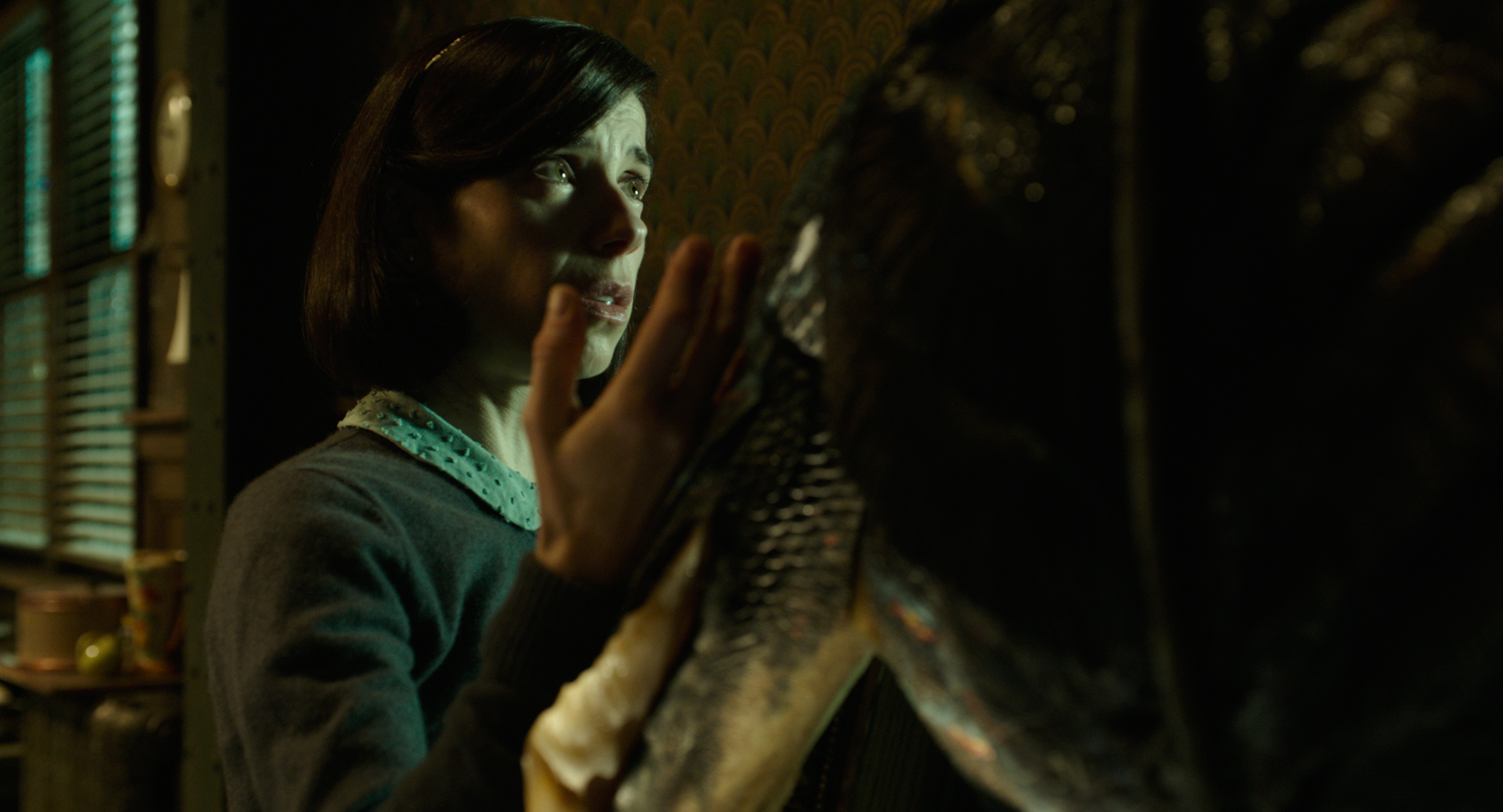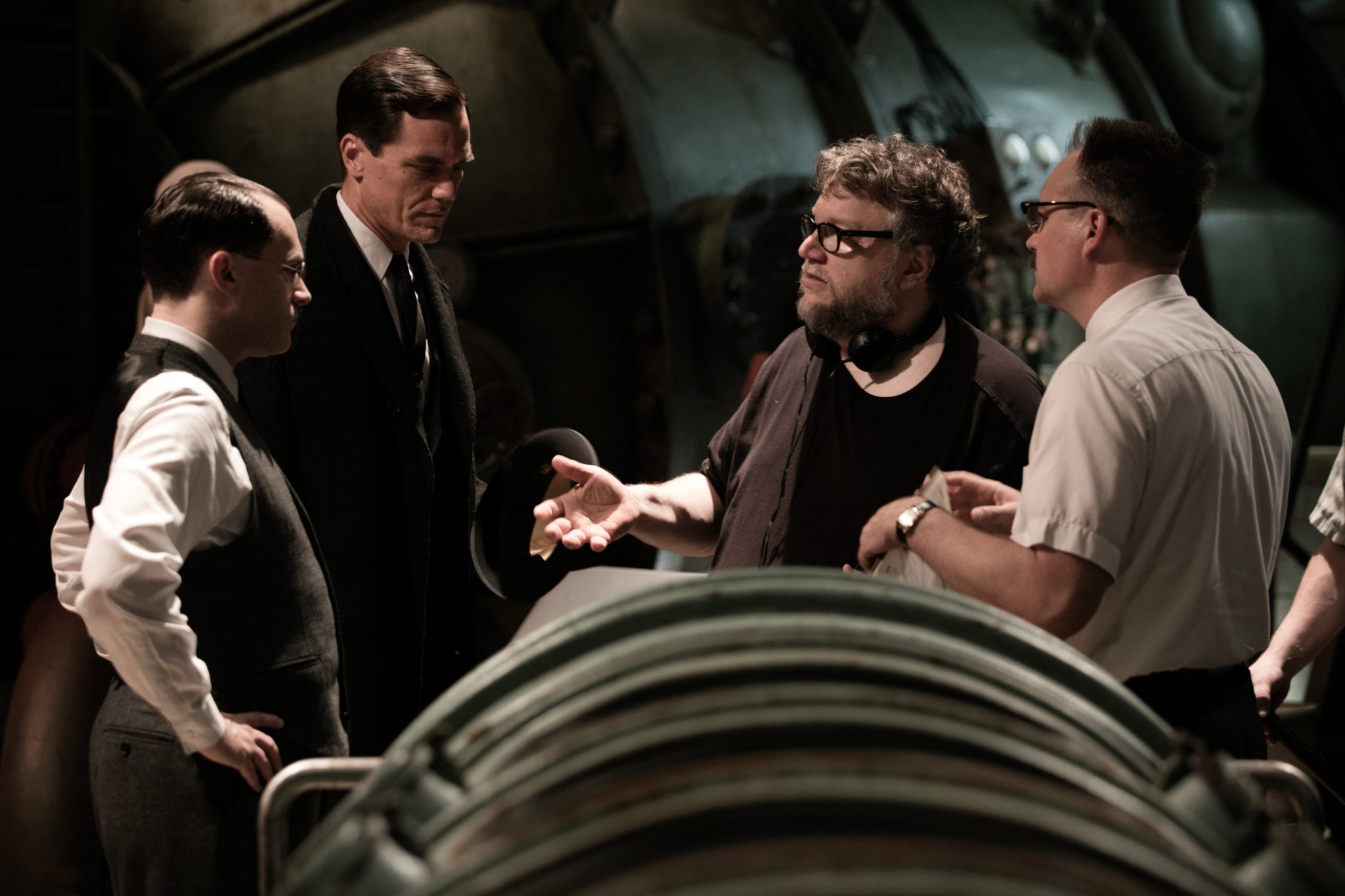How Close Collaboration with Guillermo del Toro Produced a Director's Cut in Every Sense of the Word
Guillermo del Toro said recently that his Golden Globe-winning film, The Shape of Water, is “intoxicated” by both cinema and love. He shot it, he says, very much like a vintage musical, where every camera is in a constant state of movement — whether on a dolly, Steadicam or some other improvised crane arm. The technique produced a very modern fairy tale that quite literally swims across the screen.Thanks to the sweeping camera work by cinematographer Dan Laustsen — mainly an Alexa LT on a crane — the director’s favorite films, from Metropolis to Creature of the Black Lagoon, flow through its stylized frames. In each of his films to date, Del Toro’s monsters, innocents and authoritarians collide, repel and seduce one another and those currents continue here. Doug Jones, who played both monsters in Pan’s Labyrinth as well as Abe Sapien in the Hellboy films, channels all of them into the elegant river god he plays in this film.
We spoke with editor Sidney Wolinsky (Boardwalk Empire, The Sopranos, House of Cards) about navigating such an ambitious project, his very first feature with the director. Turns out, del Toro has a breathtaking internal compass.
StudioDaily: I recently read that the marvelous money-saving production “trick” of this film was that del Toro shot it between seasons of his TV show The Strain on some of the same soundstages. Your work on the The Strain’s pilot is how you first met the director, is that right?
Sidney Wolinsky: Yes, Guillermo knew and liked my worked from that and asked me to do the show.
What was your first reaction after reading the script?
You know, you scratch your head when you see a love scene between an amphibious man and a woman, so it’s like, “O.K, this is going to be a bit of a stretch.” But you know, The Strain was a bit of a stretch as well, and Guillermo has a real ability to take this material and treat it with respect and dignity and make it come to life. Obviously I hoped he’d have the same success with this show, because it initially seemed even more challenging to me. But I really like working with him, so I would have worked with him whatever the script was like.

Doug Jones, as an amphibious river god, and Sally Hawkins as a mute cleaning woman in The Shape of Water.
Photo Courtesy of Fox Searchlight Pictures. © 2017 Twentieth Century Fox Film Corporation All Rights Reserved
Did you talk to him about his original idea to shoot the film in black-and-white?
No, I never did. The story that I heard was he told Fox he wanted to shoot in black-and-white and they said they would give him $10 million, but they would give him $20 million if you shoot in color. But I never heard that directly from him. Although at the end of the film, Guillermo did ask Dan Laustsen, the DP, to explore converting some release versions of it to black-and-white. Dan just explained that if it had been intended to be in black-and-white from the start, it would have been lit entirely differently. It was designed from the ground up to be full of color. [For more on color in The Shape of Water, listen to our podcast interview with production designer Paul Austerberry.)
What was your jumping-off point in the edit, in terms of tone?
The tone is really built into the way the film is shot. Guillermo sets the tone by the way he directs the actors, the way he has the camera move. As an editor, I take the footage that I’m given and try to make the scenes work on those terms. For him, the tone is already baked into it. It suffuses everything. Because he moves the camera all the time, that dictates how he shoots. He doesn’t do a lot of multiple cameras and he does a lot of interlocking covers. He doesn’t just set up a static camera and shoot the whole scene in a master, then shoot an over-the-shoulder, then shoot in the other direction, and then do closeups. He designs shots that never stop moving and visually are always revealing things. I think that’s what keeps the film really interesting. He did that on The Strain as well, I noticed. As an editor, you always adapt to the director you’re working with. I’ve done a lot of television, and there you are always working with a new director. You learn to adapt quickly and roll with the punches.
Where were the challenges as you moved through the edit?
The challenge as an editor is always the storytelling and making sure that the emotions are working in the scene and you understand what the characters are feeling. In a more global sense, you need to make sure the viewer understands what’s going on throughout. The most challenging section of the film is the heist. A lot of work went into that over a period of time. Scenes were cut into smaller and smaller pieces to be intercut with other scenes. Finally you have to find a piece of music that keeps it interesting.

(From L-R) Michael Shannon, Sally Hawkins and Octavia Spencer.
Photo by Kerry Hayes. © 2017 Twentieth Century Fox Film Corporation
Were you on set cutting dailies from the start of production?
Yes, I was there in Toronto in August on through to May and June, when we had a hiatus, then came back in July to work on the dubbing stage, when we finished the show. The shooting schedule was about 53 days, so they shot through about November. Then Guillermo and I worked on through and locked it around April or so. He came in every day to work with me during production, so I immediately got his notes on a scene and make adjustments. I could then make my own adjustments and show it to him the next day. When we got more scenes we could put them together and look at them as a continuous piece. It really was an evolution of his cut, which is different from how I usually work. I really enjoyed getting those notes right off the bat. It becomes a much more collaborative process. My job is to keep my own point of view, so if tells me to do something and I think there’s a better way to do it, I’ll tell him. Later on, when we were working on the final pacing and length, I would come up with my own ideas and present them to him. Or if he had an idea that wasn’t fully formed, I would go and try to make that work.
Did you work with temp music tracks in those early days?
Yes, as soon as we had enough scenes put together to need a cue, he would ask us to find one for that spot. The show was being built on every level from the start. The VFX were ordered very early on. My assistants would temp effects but the vendors would give us comps very early so we could begin integrating it. I had two assistants while we were shooting and a couple weeks after we finished shooting, we were down to just one again.
What editorial tool or technique was particularly helpful to you on this project?
I cut in the Avid, the latest version. I’m a believer in staying up to date. I figure everything has bugs, and they always come up with something new and helpful. I use ScriptSync, so we devoted one assistant to that and the VFX. The voice recognition with that feature is pretty useful; it’s not quite perfect, and my assistants had to go through and make adjustments. If there is a lot of ad-libbing on set, of course that won’t work. Another assistant set up all the subtitles for the Russian-speaking scenes. There are an amazing amount of new temp effects you can do now in the Avid, but those are always temp. The level of perfection that the VFX artists can do now tops everything.

Sally Hawkins and Richard Jenkins.
Photo by Kerry Hayes. © 2017 Twentieth Century Fox Film Corporation
Based on the way del Toro likes to shoot, I’m guessing there wasn’t too much tweaking going on during the edit to improve a particular scene’s performance.
The performances in this film are just tremendous. Sally Hawkins was amazing. And Richard Jenkins? He can make anything work. When you have great actors, you just cut their performance. It’s right in front of you. The two Michaels, Shannon and Stuhlbarg, and Octavia Spencer, were fantastic. It’s great to have a scene where all you want to do is maintain the performance itself and you don’t have to try to find the lines that work and sift through footage to avoid a bunch of stuff. Even with all those elements, I still wasn’t sure how it would be received. You get so close to these things. The first time I realized how good it was was at a friends and family preview screening last March. Everybody loved it. I had invited friends who would have come out and told me it was complete garbage, if they’d felt that way. I remember one friend came up to me after and said, “Don’t change a single cut!” I thought, “Oh my god. Maybe there is something really special here.”
What’s next on your schedule?
I hope to do another feature soon. I decided after this I would hold out and not jump right back into television work. Part of that was the decision to wait a while after we finished to see how the film was received. Obviously it was received quite well, so I’m looking at more feature scripts. People do get pigeonholed. I was lucky to get the chance to work with Guillermo on The Strain pilot, which was a 23-day schedule. That’s a pretty long schedule for a one-hour show, and is closer to a feature schedule. And we worked well together. I really like working with a director every day. The whole reason you’re cutting it is for the director. You want them to be 100 percent happy with what they are getting. And it’s great to have that kind of daily collaboration. It was in every sense of the word a director’s cut.
Did you enjoy this article? Sign up to receive the StudioDaily Fix eletter containing the latest stories, including news, videos, interviews, reviews and more.











